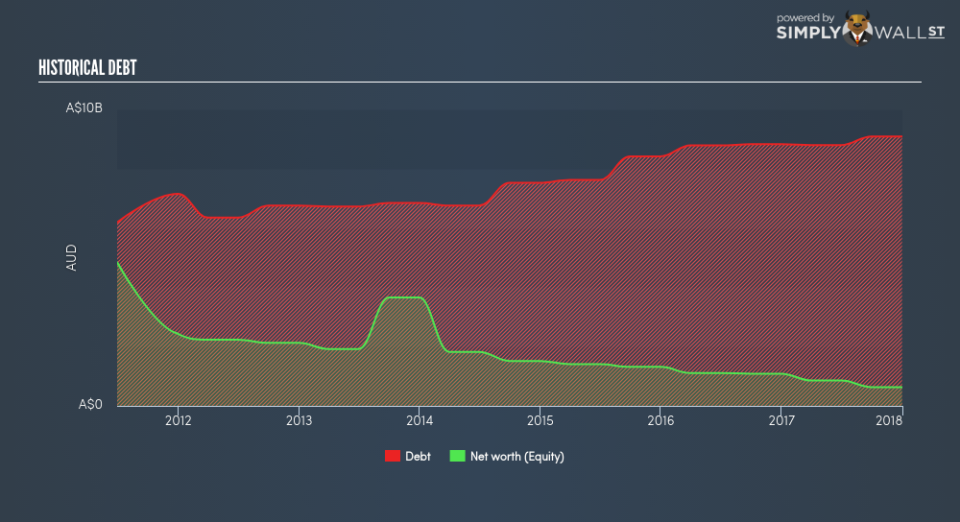Is Sydney Airport Limited (ASX:SYD) A Financially Sound Company?

Sydney Airport Limited (ASX:SYD), a large-cap worth AU$16.96b, comes to mind for investors seeking a strong and reliable stock investment. One reason being its ‘too big to fail’ aura which gives it the appearance of a strong and stable investment. However, the key to extending previous success is in the health of the company’s financials. I will provide an overview of Sydney Airport’s financial liquidity and leverage to give you an idea of Sydney Airport’s position to take advantage of potential acquisitions or comfortably endure future downturns. Remember this is a very top-level look that focuses exclusively on financial health, so I recommend a deeper analysis into SYD here. See our latest analysis for Sydney Airport
How much cash does SYD generate through its operations?
SYD has sustained its debt level by about AU$9.09b over the last 12 months made up of current and long term debt. At this current level of debt, SYD currently has AU$483.40m remaining in cash and short-term investments for investing into the business. On top of this, SYD has produced AU$1.18b in operating cash flow over the same time period, leading to an operating cash to total debt ratio of 13.02%, indicating that SYD’s current level of operating cash is not high enough to cover debt. This ratio can also be interpreted as a measure of efficiency as an alternative to return on assets. In SYD’s case, it is able to generate 0.13x cash from its debt capital.
Can SYD meet its short-term obligations with the cash in hand?
At the current liabilities level of AU$1.11b liabilities, it appears that the company has not maintained a sufficient level of current assets to meet its obligations, with the current ratio last standing at 0.6x, which is below the prudent industry ratio of 3x.
Can SYD service its debt comfortably?
Since equity is smaller than total debt levels, Sydney Airport is considered to have high leverage. This isn’t surprising for large-caps, as equity can often be more expensive to issue than debt, plus interest payments are tax deductible. Accordingly, large companies often have an advantage over small-caps through lower cost of capital due to cheaper financing. We can check to see whether SYD is able to meet its debt obligations by looking at the net interest coverage ratio. Ideally, earnings before interest and tax (EBIT) should cover net interest by at least three times. In SYD’s case, the ratio of 2.08x suggests that interest is not strongly covered. The sheer size of Sydney Airport means it is unlikely to default or announce bankruptcy anytime soon. However, lenders may be more reluctant to lend out more funding as SYD’s low interest coverage already puts the company in a risky position.
Next Steps:
SYD’s high debt levels is not met with high cash flow coverage. This leaves room for improvement in terms of debt management and operational efficiency. In addition to this, its low liquidity raises concerns over whether current asset management practices are properly implemented for the large-cap. Keep in mind I haven’t considered other factors such as how SYD has been performing in the past. I suggest you continue to research Sydney Airport to get a more holistic view of the stock by looking at:
Future Outlook: What are well-informed industry analysts predicting for SYD’s future growth? Take a look at our free research report of analyst consensus for SYD’s outlook.
Valuation: What is SYD worth today? Is the stock undervalued, even when its growth outlook is factored into its intrinsic value? The intrinsic value infographic in our free research report helps visualize whether SYD is currently mispriced by the market.
Other High-Performing Stocks: Are there other stocks that provide better prospects with proven track records? Explore our free list of these great stocks here.
To help readers see pass the short term volatility of the financial market, we aim to bring you a long-term focused research analysis purely driven by fundamental data. Note that our analysis does not factor in the latest price sensitive company announcements.
The author is an independent contributor and at the time of publication had no position in the stocks mentioned.

